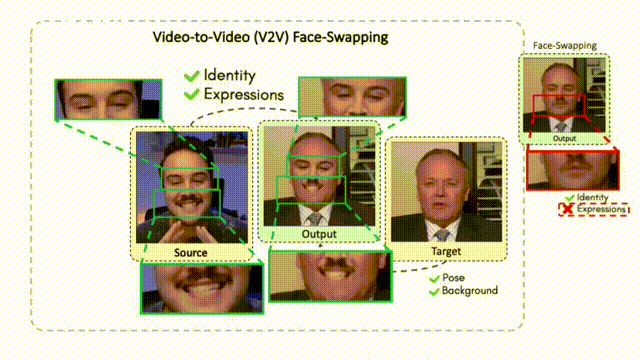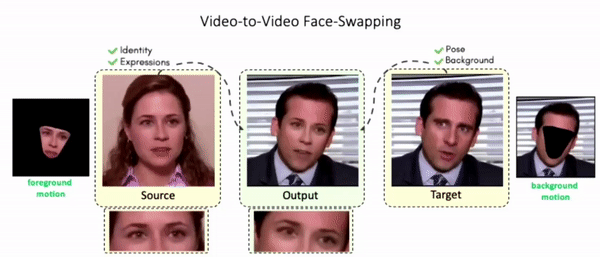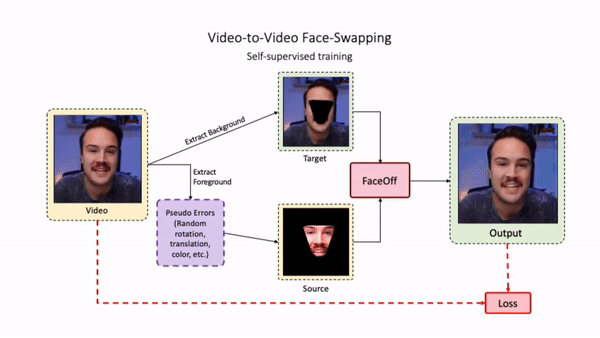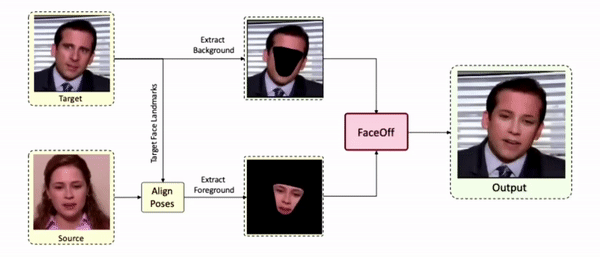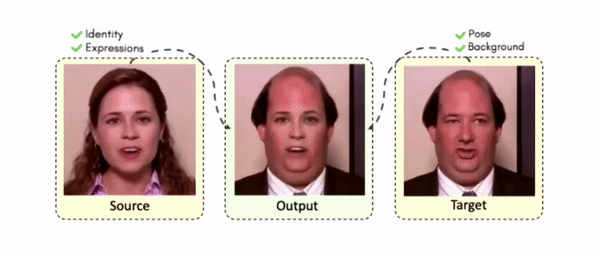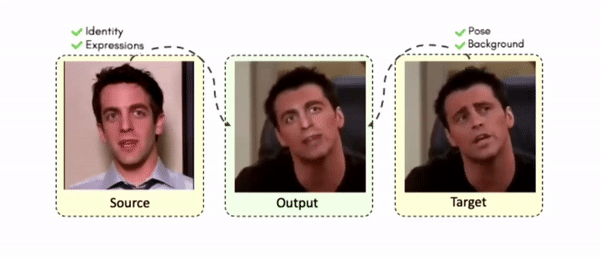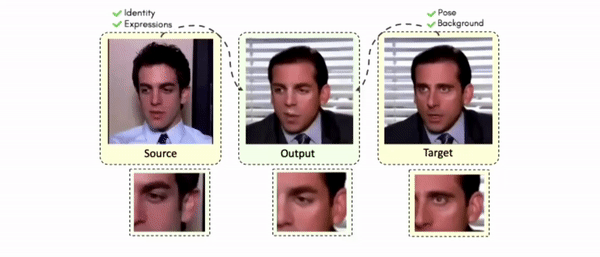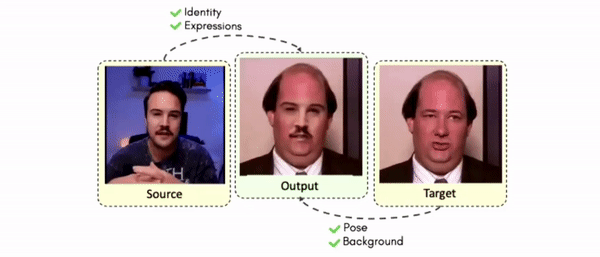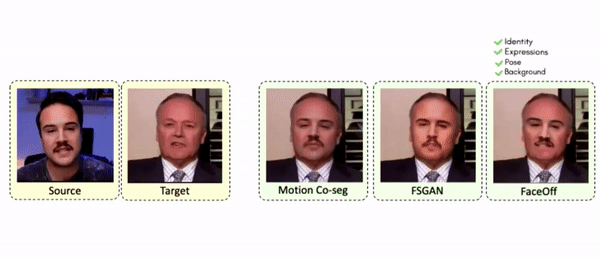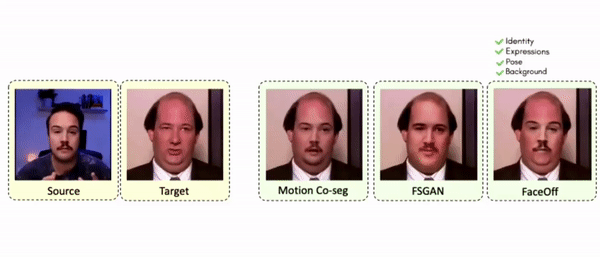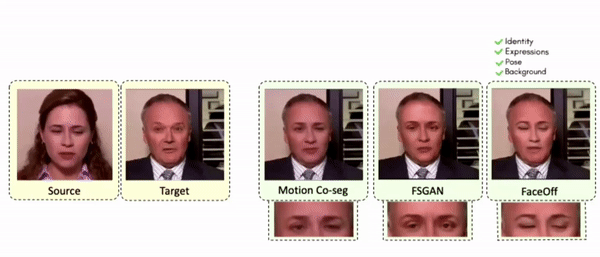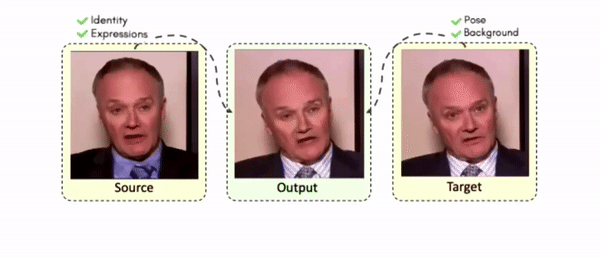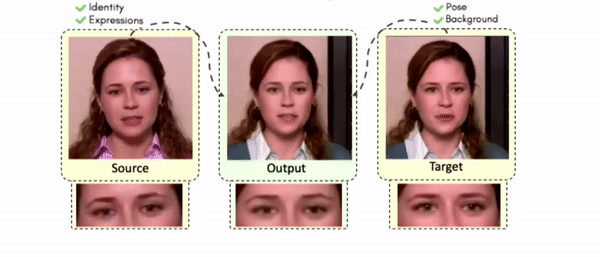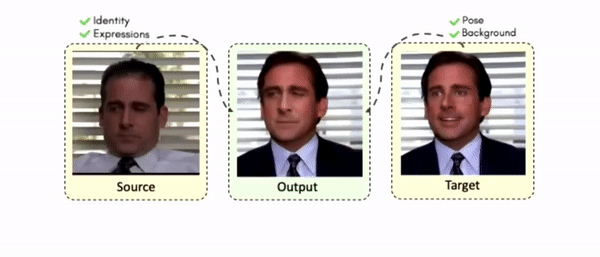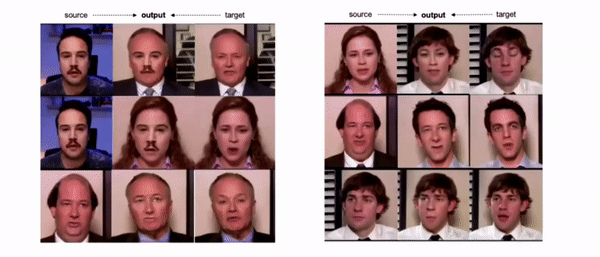Abstract
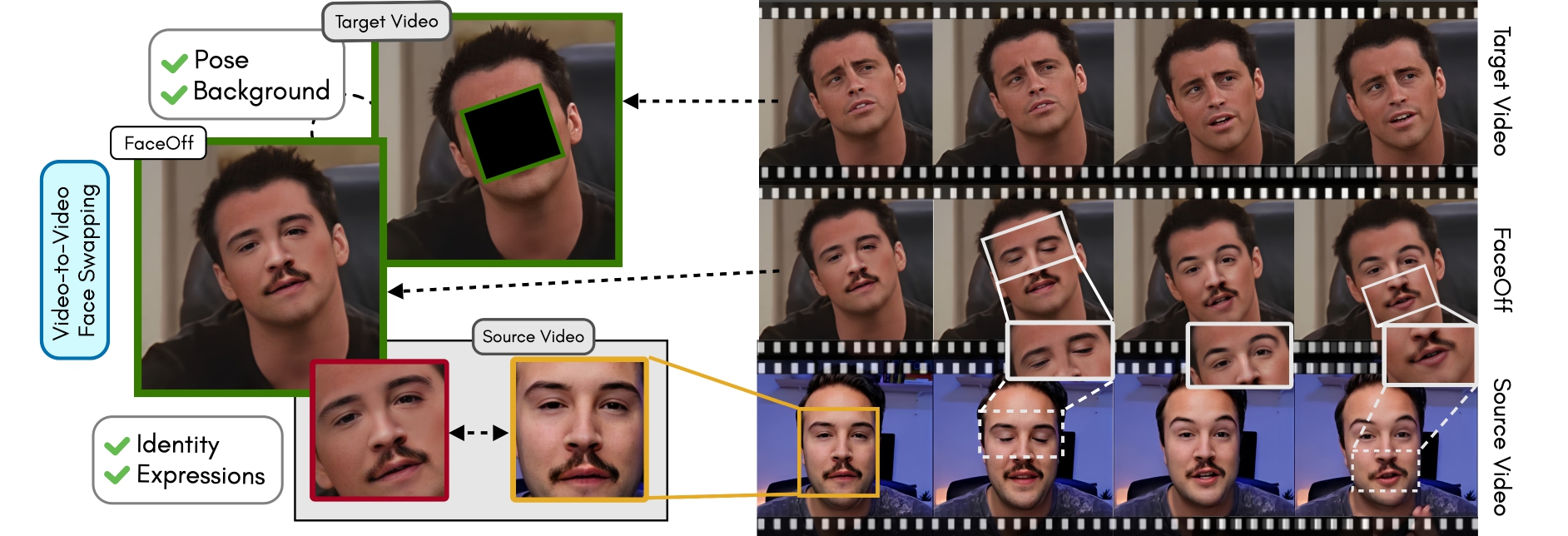
Doubles play an indispensable role in the movie industry. They take the place of the actors in dangerous stunt scenes or scenes where the same actor plays multiple characters. The double's face is later replaced with the actor's face and expressions manually using expensive CGI technology, costing millions of dollars and taking months to complete. An automated, inexpensive, and fast way can be to use face-swapping techniques that aim to swap an identity from a source face video (or an image) to a target face video. However, such methods cannot preserve the source expressions of the actor important for the scene's context. To tackle this challenge, we introduce video-to-video (V2V) face-swapping, a novel task of face-swapping that can preserve (1) the identity and expressions of the source (actor) face video and (2) the background and pose of the target (double) video. We propose FaceOff, a V2V face-swapping system that operates by learning a robust blending operation to merge two face videos following the constraints above. It reduces the videos to a quantized latent space and then blends them in the reduced space. FaceOff is trained in a self-supervised manner and robustly tackles the non-trivial challenges of V2V face-swapping. As shown in the experimental section, FaceOff significantly outperforms alternate approaches qualitatively and quantitatively.

